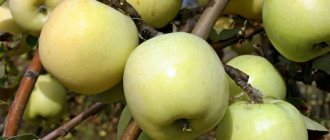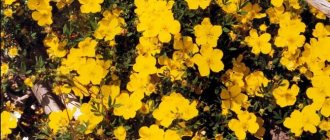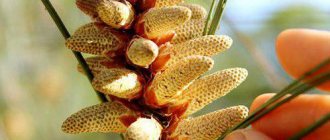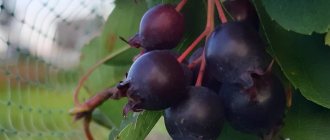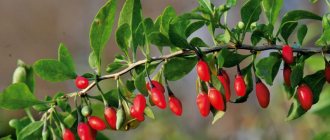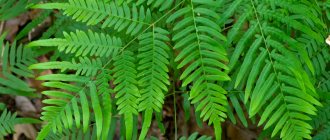Linden on the plot - the sure secret of garden victories
Linden (Latin version - Tilia) belongs to the category of ornamental trees and shrubs, as well as plants for the formation of shady areas, if we consider it from the point of view of growing it in our own garden plot.
Linden belongs to the malvaceae or linden family (from the Latin Tiliaceae). The temperate and subtropical zones of the Northern Hemisphere are traditionally considered to be the birthplace of linden, where these trees are widespread. Broad-leaved and mixed forests located in North America, Asia and Europe are particularly diverse. The genus Linden includes about forty species of plants in the form of deciduous trees. Moreover, lindens are quite large deciduous trees. Their height ranges from twenty to 40 meters. The use of linden is especially significant within modern green construction. All types of linden trees, without exception, are characterized by beautiful, dense and fairly easy to mold crowns, the diameter of which can vary from two to five meters. The branches of these trees are covered with simple, heart-shaped alternate leaves that have a pointed shape and sharp-toothed edges. However, linden is valued not only for its pronounced decorative qualities: their corymbose inflorescences are covered with abundant fragrant flowers, which have a fragrant, pleasant aroma, bloom, as a rule, with the onset of July and are characterized by excellent medicinal properties. Linden trees have a particularly powerful and deep root system, thanks to which the trees become so durable and stable. The honey-bearing qualities of linden are also widely known, and in this regard lindens occupy a leading position. Well, one of the undeniable advantages of linden trees is, of course, their soil-improving properties, due to the high calcium content in their leaves, which, after falling, saturate the soil with nutrients.
Conditions for growing linden
Let's talk in more detail about the optimal conditions for growing linden trees . They are shade-tolerant plants, and in this regard they have no equal during the day with fire. Therefore, the place you allocated to them on the site is absolutely not important. But you will have to worry a little about the soil: the fact is that only fertile and well-drained soil is ideal for linden. Soil salinity is simply unacceptable for these trees, but lime impurities in the soil greatly stimulate the growth and development of linden. In this case, the soil reaction must be either neutral or alkaline. Seals have an extremely negative effect on the linden root system. Otherwise, growing linden is not difficult and not too troublesome, which, of course, is a direct consequence of its frost resistance, shade tolerance and high speed of adaptation to new conditions.
Linden is a very beautiful tree, and your site will always look impressive thanks to it. Solitaire, mixed, alley or group planting of linden trees is always a trump card for garden decoration. In addition, small-leaved and heart-shaped linden make excellent hedges, the creation of which has become especially popular in recent years. Linden is also good in combination with oak, rowan, mackerel, beech, ash, maple and many other tree species.
There is absolutely no need for any special care for linden . The only thing. What really needs to be emphasized is watering, which linden trees need throughout the dry summer. If your linden tree is not yet two years old, feed it with nitrogen-containing fertilizer.
Do not prune your linden tree until it is at least a year old. The first pruning is done to a third of the length of the branches to stimulate the growth of side shoots. Fortunately, today there is no shortage of literature on breeding and growing linden, so if you suddenly have any questions, it won’t be difficult to find decent detailed explanations on them.
To propagate linden trees, you can use seeds , although cuttings, shoots, grafting or layering are also perfect. Moreover, layering is good precisely in the case of forming a hedge. Planting of which is best done in a row, in waves, or in the usual checkerboard pattern. You can find high-quality linden seedlings both in specialized garden centers and in online stores.
In the case of linden, you don’t have to worry about diseases and pests at all, because they are not at all scary for it. Linden can only get sick if there is a complete lack of favorable growing conditions.
Types of linden with photos
Below we will describe those species and varieties of linden that are most widespread both in natural conditions and in parks and gardens.
Linden (Tilia europaea)
This hybrid is also called heart-leaved or European (Tilia europaea). It was bred using cross-pollination, and 2 types of linden were taken: large-leaved and small-leaved. Unlike other species and varieties of linden, the flowering of this plant begins very early, namely at the end of May (less often in the first days of June).
This hybrid is the record holder for life expectancy among linden trees; it can live about 1250 years. The yellow inflorescences contain from 3 to 8 buds. The length of the dark green smooth leaf blade can reach up to 90 mm. This linden tree grows best in a well-lit area with neutral soil.
Particularly popular in culture are such decorative varieties as: grape-leaved and cut-leaved. It is characterized by increased resistance to frost and drought, and the tree also grows well in an urban environment with heavy air pollution.
Small-leaved linden (Tilia cordata)
This species is most widespread in the European part of the mainland. It is quite often found in nature in the Crimea, the Urals, the Caucasus and Western Siberia. The species is also called winter linden (Tilia cordata Mill).
The plant can reach a height of about 30 meters. The crown of such a tree has an unusual shape: its lower branches droop to the ground, and the middle and upper branches grow vertically upward. The smooth, small leaf blades are heart-shaped and have long petioles (from 30 to 60 mm in length). They are colored green, with their undersides being a lighter shade.
Compared to large-leaved linden, the buds of this plant open half a month earlier. The color of the bark is grayish-yellow. This linden tree blooms in June–July. The upward-facing inflorescence includes from 5 to 11 flowers, colored yellow. Seed ripening is observed in the first days of August. This hardy and unpretentious tree is quite popular in park and garden landscape gardening.
Linden (Tilia platyphyllos)
Large-leaved linden is also popularly called flat-leaved or summer. This variety in nature is widespread in the Caucasus, Ukraine, Moldova and European countries. The tree reaches a height of about 40 meters, while the diameter of its trunk is about 6 meters. The crown has a spreading pyramidal shape. This linden grows best in areas with very nutritious humus soil. The pubescent ovoid leaf plates are dark green in color and are about 14 centimeters long.
This tree differs from small-leaved linden in the size of its foliage, as well as in its flowering period, which occurs in July. The inflorescence contains from 2 to 5 buds. Drooping flowers are painted yellow. The fruits are five-ribed, oval-shaped nuts; they ripen in August. In culture, decorative varieties such as grape-leaved, golden-leaved and pyramidal are popular.
Manchurian linden (Tilia mandshurica)
In Russia, the Manchurian linden can be found in the Far East. At the same time, in Europe it is very popular in culture; it can often be seen in parks and gardens. This shade-tolerant species is characterized by very high resistance to frost. If we compare this tree with other types of linden, it is short, almost dwarf. The maximum height of the plant is 20 meters, and the average is about 15 meters. The linden tree is decorated with a spreading lush crown. This look can be given the shape of a bush if desired.
The surface of the greenish-yellow branches has felt-like pubescence. The length of the leaf blade is about 30 centimeters, there is pubescence on its surface. The peculiarity of this species is that the sterile and fertile shoots differ from each other in foliage. On the fruiting branches there are notched-toothed green glossy leaf plates of a rounded shape, on the underside there is pubescence, and the front side is bare, the length varies from 6 to 12 centimeters. On sterile branches, the foliage has the same shape, but it is two or three times larger. In coppice stems, the foliage is more dissected, and shorter petioles grow.
The inflorescence includes from 5 to 15 buds, while the fruit is formed from every second flower. Lemon-yellow corollas reach about 12 mm in diameter. The fruits are densely pubescent nuts, the diameter of which is about 11 mm. Ripening is observed in September.
LINDEN - planting, care, propagation, use in the landscape//collection and harvesting of linden blossoms
Linden: description of the tree and its types
Linden is a very popular plant.
The tree is incredibly popular all over the world. There are more than 30 different species in nature. They differ in size and crown shape. There are linden trees that are over 300 years old.
Main types:
- Caucasian. The tree reaches 40 m tall. The crown is quite round and neat. Young shoots differ from adults in the color of their bark. They have a reddish tint. This species grows in Asia and the Caucasus.
- Manchurian. This type of linden most often grows multi-stemmed. The height of an adult specimen does not exceed 20 m. This is a frost-resistant tree that tolerates sudden drops in temperature well. Linden grows in the Amur region and the Far East.
- Silver or felt. The appearance is distinguished by deciduous plates. In the silver linden they are covered with fine fluff. The tree grows up to 30 m tall. Most often found on Russian lands.
- Small-leaved. This is the most popular species that can be found in all regions of our country. Small-leaved linden is also frost-resistant. It grows up to 30-40 m. It all depends on the planting location.
- Large-leaved (broad-leaved). The tree has a spherical crown. The leaves are small. Their width does not exceed 25 cm. It grows very quickly. Mature trees reach 40 m in height. The broad-leaved species grows on slightly acidic and alkaline soils.
Large-leaved linden can grow 45 cm in height in one year.
Types and varieties of linden
Small-leaved linden ( Linden Cordate or Multi-stemmed ) - grows in the wild in Western Siberia. The tree reaches a height of up to 30 meters and can grow for at least about a hundred years. Some trees of this variety grow for 1000 years. The culture has dark green smooth leaf blades on top and bluish ones on the bottom. Light yellow inflorescences, consist of 5-11 buds directed upward. The tree blooms in mid-summer.
Large-leaved linden is a common crop in Europe. The tree reaches a height of 25 to 30 meters. It has large, pubescent leaf blades of a dark green hue. The inflorescences are directed downwards. After flowering, fruits with a hard shell and pronounced ribbing are formed in place of the flowers.
European Linden
Grows in Western Europe. It reaches a height of up to 40 meters. It has a dense, spherical crown. The bark is gray with small cracks. The leaf blades are oval, heart-shaped. They are silver on the inside and dark green on the outside. Flowering time occurs at the beginning of summer. The seeds ripen in August. The minimum lifespan of such a tree is 150 years.
Felt linden ( Pushistaya , Serebristaya , Hungarian linden ) is a tree crop that grows in the Caucasus. It reaches a height of up to 30 meters and has a spreading crown. Leaf blades are pubescent. They are dark green above and silver below. The inflorescences are light yellow with a pleasant aroma. Flowering time occurs at the beginning of summer.
Amur linden grows wild in Primorye, China and Korea. It reaches a height of up to 20 meters. The leaf blades are round, dark green, glossy, large. The inflorescences are drooping, light yellow with a pleasant aroma. Flowering time occurs in July and lasts for three weeks.
American linden - grows in North America. The bark of the crop is black with small cracks. The tree reaches a height of up to 40 meters and has a sloping crown. The leaf blades are large, oval, dark green. The crop blooms in mid-summer, with clusters of light yellow inflorescences with a pleasant aroma.
Linden Painted
It grows in the wild in the Crimea and the Caucasus. Rarely found in cultivated form. It reaches a height of up to 20 meters and has a dense ovoid crown with drooping branches. The leaf blades are large, ovate with a pointed end. They are dark green above and silvery below. The inflorescences are racemose, drooping, light yellow. The crop blooms in early summer.
Henry Linden grows wild in Central China. It reaches a height of up to 25 meters. The height of cultivated trees is up to 10 meters. The linden tree has a spreading crown and brown bark with small cracks. The leaf blades are large, dark green, heart-shaped with a sharp tip. The inflorescences are light yellow, drooping with a pleasant aroma. Flowering time occurs at the beginning of summer.
Mikel's linden - the birthplace of the culture is Japan. The tree reaches a height of up to 15 meters. The leaves are dark green, oval with a paired dissected edge. The inflorescences are drooping, yellow-white in color with a sweet, pleasant aroma. The flowering time of the crop is at the beginning of summer.
Choosing a landing site
Linden is an unpretentious tree.
But despite this, it should be taken into account that she loves a lot of light. It is recommended to choose a planting site with drained soil. In this case, the soil may not be fertile. The tree develops well on sandy soils and soils fertilized with humus. When planting a linden tree, you should take into account that its durability depends on the quality of the procedure performed.
Seedlings take root best in a new location if they were planted on a cool and fairly humid day.
Therefore, the optimal time for planting linden is autumn.
How to plant a linden tree in the fall
For planting, you can use purchased trees or dig them up near an adult tree.
Most of the shoots can be seen in the shelterbelt or forest. They easily tolerate moving over long distances, so the likelihood that seedlings will not take root is minimized. Stages of planting a tree:
- The first thing to do is dig a hole. The width and depth of the dimple should be within 50 cm.
- Before planting a linden tree on a plot, you need to lay drainage at the bottom of the recess. It could be pebbles, crushed red brick. It is also good to use small pieces of slate. The drainage layer should not exceed 15 cm.
- Sprinkle the top of the drainage with humus and superphosphate. For each seedling it will be enough to use 50 to 60 g of the drug.
- Then pour the prepared substrate on top. It is made from 1 part turf soil and 2 parts sand with humus. It is important to ensure that the soil acidity does not exceed 7.5 pH.
- The distance between seedlings should be from 3 to 4 m. To create a linden hedge, the distance is halved.
When placing a seedling, you must be extremely careful. The root collar of the tree should be above the soil surface. If it is covered with soil, this is not critical for the linden, but in rare cases it can lead to slower growth.
To prevent water from lingering near the trunk, it is necessary to form a near-trunk hole.
Linden pruning
The first pruning of young trees is carried out a year after planting. During the procedure, the branches are shortened by no more than 1/3.
With the help of pruning, they not only form the crown, but also carry it out for sanitary purposes. In winter and early spring, dry shoots are removed. If the linden grows as a hedge, then it is cut either in early spring or at the end of summer. In the future, pruning is carried out 4 times a season.
Caring for linden trees on the site
The tree will be beautiful and healthy if you follow the minimum care rules. It is enough to water, fertilize, remove weeds, and trim branches in a timely manner.
Irrigation rules
Only planted trees need abundant watering. Use water at room temperature. It is better not to irrigate seedlings with cold liquid, as this can slow down their growth.
Top dressing
The first fertilizer is applied in early spring. To do this, make a solution from mullein (1 kg), urea (15 g), and saltpeter (25 g). Mix all components thoroughly and add 10 liters of clean water. In the autumn, it is recommended to apply nitroammophoska. For one tree, about 20 g of the drug will be enough.
Mulching
This is an important procedure when growing linden. The tree trunk circle is covered with mulch after each weeding. To do this, you can use peat, dry tree leaves, wood shavings or peat compost. The mulch thickness should be within 12 cm.
Linden propagation
To plant a tree, you do not have to buy expensive planting material in the store.
You can grow a seedling at home. Reproduction methods:
- stem layering;
- root cuttings;
- seeds;
- cuttings.
Propagating linden by seeds will require a lot of time and effort. In order for the grains to germinate and quickly increase in growth, they need to be stratified. Sow linden to a depth of 2 to 3 cm. In this case, the soil should be nutritious and well-permeable to air. When the seedlings reach 15 cm, they can be planted in open ground.
Before planting a linden tree with cuttings, you need to prepare planting material. Branches should only be cut from mature trees. Their length should be from 8 to 15 cm. The upper cut is made at a right angle, and the lower one - oblique.
As you can see, planting and caring for linden does not require any special skills. The tree will develop well if you choose the right site and water it in a timely manner. Also, don't forget about pruning. This is a procedure with which you can make a linden tree a real decoration of the garden.
Features of linden propagation - video
Basic methods of reproduction
Growing linden at home is not difficult. It grows well both in shaded areas and in illuminated areas. The main thing is to ensure that the soil is not too wet or, conversely, too dry. Sandy soil with humus is best suited for planting and propagation. Fallen leaves from a tree improve the properties of the soil around it.
When planting a seedling, it is important to take into account that the tree will grow large, so it should not shade other plants. And the linden tree itself needs space to develop. If you plant on the windy side of the site, it will not harm it. But in a few years it will be able to protect the area with the help of a thick, wide crown from strong winds.
Linden can be propagated by seed, cuttings or layering. In any case, it is necessary to prepare the soil in advance. To do this, it is recommended to mix one part turf soil, two parts humus and two parts sand. Let's take a closer look at each method of reproduction.
Seeds
It will take quite a long time to grow a linden tree from seeds. This is painstaking work that requires maximum attention and responsibility. To propagate linden by seeds, you need to keep them in well-moistened damp sand in the cold (not above zero degrees) for up to six months. This is called seed stratification. It is necessary to improve the seedlings of the plant during the propagation process.
In the spring, when the time for night frosts has passed and weather conditions have stabilized, they are transplanted to an open area, where the strongest of them sprout. For the first two to three years, it is recommended to water them, feed them with fertilizers, and cover them for the winter. Young seedlings can be transplanted to a permanent place when they become stronger and no longer require careful attention and care.
By layering
To propagate linden by stem layering, you need to dig shallow longitudinal depressions, bend the lower branches of the tree, and then bury them. Rooting occurs within 1-2 years. Then, the sprouted shoots can be separated and transplanted to a new location. It is important that the propagation process in this way occurs at the beginning of spring, when the leaves have not yet begun to bloom.
You can propagate by root layering. This method is considered one of the simplest and most popular. Young shoots grow near the trunk of an adult tree in spring. To transplant, they are carefully separated from the “mother” root and planted immediately in the chosen place. In this method of propagation, young seedlings can be transplanted from the forest belt to garden plots.
Cuttings
Propagation of linden by cuttings is one of the popular methods among gardeners. Linden cuttings are usually carried out in the fall. To do this, cut young branches from 10 to 15 cm long. The branch should be green with young foliage. All leaves are removed during preparation. The cuttings must have at least 3-4 internodes.
After the cutting is cut, it is placed in water. In order for the root system to develop more efficiently, it is recommended to dilute the water with Kornevin. It is important to maintain the temperature of the water. It should not fall below 25 degrees Celsius. After the roots form, the cuttings are transplanted into a container.
Cuttings that have taken root are placed in boxes with damp sand, buried no more than two centimeters. With the onset of a thaw, they are planted in an open place in the ground, ensuring timely watering and care.
Do you need it?
Let's start with the fact that there are differences between areas. On the traditional six hundred square meters, it is unlikely that anyone would even think of planting oaks and birches, because there is not enough space without them. The idea of your own “miniature forest” usually visits the happy owners of spacious estates, where you can freely place an orchard, a full-fledged vegetable garden, lawns with flower beds, and everything else your heart desires. And if she wanted a pine forest, why not.
If you want to plant trees, and the area allows it, why not.
Just keep in mind that the dictates of the soul are subtle, unsteady and changeable matter. And trees, on the contrary, are quite stable, purely material, and in their adult form reach considerable sizes. Therefore, before doing anything, it is better to think carefully. So that later you don’t have to cut down what’s planted or restore what’s been cut down. Only after making sure that you definitely need it, proceed to action. And I will try, based on experience (mine and others), to suggest what it would be worth thinking about in advance.
After all, on the one hand, trees from the forest in the country are a real plus: beautiful; they do not cause much trouble (unlike various varietal whims); It’s nice to bask in the shade in the summer heat; Such plantings protect from piercing winds, hold back snow in winter, and protect from prying eyes. On the other hand, there are also plenty of disadvantages: the same shadow may one day turn out to be completely out of place; not every cultivated plant will agree to such a neighborhood; an unsuccessfully planted tree can destroy the foundation of a building; every autumn you will have to remove the leaves (unless your choice falls on conifers) ... In general, there is a reason to carefully weigh everything.
To plant or not to plant?
If there are no trees on your site yet, but you really want there to be, you are probably beset by many questions and doubts. Still, to plant or not to plant? And if you plant, then what exactly? And where is better? I have no answers - there are no universal solutions to this matter. But there are some considerations.
Is it worth planting forest trees in your dacha?
Where exactly should not be planted?
To begin with, I propose to narrow the problem by immediately excluding those places where it is, in principle, not worth planting large forest trees. To avoid.
1. Close to home The larger the tree, the more powerful its root system. Tree roots can tear up asphalt and break concrete - such proximity is unlikely to benefit a country house. Well, probable threats should not be discounted: a strong wind or thunderstorm can break a lonely tall tree or uproot it. You can imagine the consequences.
2. Near power lines A small seedling will eventually grow, spread its branches quite widely - and it is in our own interests that there are no electrical wires within the reach of the future tree. The reasons, I think, are clear.
Someday the trees will grow. It’s worth immediately thinking about what and how this might affect
3. Near the garden Even if you have oriented correctly and the shadow from the tree does not fall towards the beds, do not forget about the roots. Which obtain food and water to feed a far from small plant. Why do we need such competition?
4. At the neighbor’s fence Say that you planned the planting according to all the rules, taking into account the distances prescribed by the standards, and discussed the issue with your neighbor - is he okay with it? Still, you should think three times before planting a tall tree near the border with a neighbor’s property.
A small tree near the fence will not hurt your neighbor. But one day it will grow.
Your neighbor's mood may change. Or plans. Or even change neighbors. But the tree will remain. Experience shows that people often quarrel even over apples falling over the fence, or the shadow that the neighbor’s apple tree unsuccessfully casts. There are many more problems with a Christmas tree or birch.
What exactly to plant
Actually, it's a matter of taste. And the conditions, of course: trees, like any plants, have their own requirements for soil, humidity, light, climate, etc. But there are additional nuances that are worth knowing and taking into account when choosing a breed.
- Birch
Personally, I really like it. In front of my house there is a whole birch alley. Not on the site itself, however, on the territory adjacent to it. And at the old dacha, birch trees grew directly next to the house, along the fence. So I have something to say about this tree.
Birch Alley. It has both pros and cons
Birches are water feeders, they pump water well, and it is usually dry under them even in rainy autumn or early spring. Well, unless you live in a swamp, even birch trees won’t cope with draining the area. The other side of the coin: planting something under birch trees is not so easy; they are strong competitors. Lilac, rowan, and rose hips get along with them; unpretentious flowers do not complain about their neighbors - lungworts, yarrows, cornflowers, sedums and many others grow normally near birch trees.
Birch trees protect the area well from the wind. True, for this you need not one tree, but several. Birch alleys like ours do an excellent job of providing wind protection. But there is a downside: if an adult tree (due to age or disease) cannot withstand the pressure of the wind, the consequences can be devastating. But this, in general, applies to any large trees.
There was a strong thunderstorm with gusts of wind.
Birch trees litter a lot. And this is a minus. When seeds fly, everything around is strewn with them. And they, by the way, then also germinate - including in flower beds and beds. So birch is still a weed. Well, in the fall everything is in leaves. But this also has its advantage: in the spring we collect leaves and send them to compost.
- Spruce and pine
What if it grows on its own?
Or maybe you were lucky - you got a plot on which mature trees already grow? It's time to remember the folk wisdom: “Measure twice, cut once.” It's never too late to cut it down; it's easier and faster than growing it. And most likely, something really needs to be removed - for one reason or another. But before you take up an ax or saw, think.
Mushrooms grow here in summer, and birds nest in the branches.
It will take more than one year to recreate the conditions in which a tree from the forest feels comfortable. But this is a unique environment, a kind of small world. For example, under my birch trees every summer mushrooms grow - boletus and porcini mushrooms; at the old dacha, black milk mushrooms also appeared in the fall. Near one of the trees, lilies of the valley settled on their own, without my participation. Birds nest in the branches.
In a word, my opinion: if the area of the plot allows you to leave some of the natural vegetation, and this choice of plantings does not contradict your aesthetic preferences, it is worth preserving at least a corner of the forest nature for yourself. And what do you think?
When and how to plant a linden tree?
Linden is one of the most common trees used for urban landscaping. Planted in parks and squares, used to create alleys and hedges. It is valued for its unpretentiousness, neat appearance, discreet decorativeness, thick, silky crown, pleasant aroma of flowers and durability. Today, some types of this tree are used in landscape design. A single linden tree with a correctly formed, graceful crown, growing in a garden plot or local area, looks impressive. It easily tolerates cutting and retains its desired shape for a long time.
The meaning and use of linden
Planting a linden tree on your property is an ideal solution for those who love clean air, a pleasant aroma, and prefer traditional medicine for the treatment of various diseases. After all, its beneficial properties are countless. Almost all parts of this culture are used in the manufacture of medicines. Infusions and decoctions are prepared from the bark, buds, leaves, and flowers.
Of all the variety of honey in our country, linden honey is considered the most healthy. It has antibacterial properties, is used to treat colds, gastrointestinal tract, heals wounds, burns. Dried and crushed linden buds also help with burns.
Ascorbic acid, which is found in almost all parts of the tree, accelerates sweating. Therefore, a decoction of leaves, buds, and flowers can be used to relieve fever. Tea made from flowers is used to treat colds to relieve inflammation.
Craftsmen make dishes and souvenirs from the bark. And in ancient times, bast shoes were woven from bast. Linden wood is white with a pink tint. It is valued in construction and the manufacture of products requiring high strength. For example, musical instruments or furniture. Often houses and bathhouses are built from linden, as it retains heat well and is not affected by rodents.
Application in landscape design
Linden trees are usually planted in alleys, parks, squares, and squares in rows in which the trees are not located very close to each other. Such columns look good if the crown of the plants is formed equally.
As for planting on the site, if it is not very large, it is better to plant one tree, but so that the emphasis is on it. Linden harmonizes perfectly with any other plants and looks good in the same composition with them. Linden is especially combined with various types of conifers. The composition of green shades and fragrant aroma will not leave anyone indifferent. It is in this area of the garden that you can make an excellent recreation area.
When and how to plant a linden tree?
The plant is very unpretentious and can grow in shady places and in open, sunlit areas. Prefers well-drained, moderately moist soil. Improves soil properties with its own fallen leaves. Excess or lack of moisture inhibits the plant and negatively affects its development. Small-leaved linden is widespread in Russia, the areole of which falls on the European part of the country.
grow linden from seeds or using seedlings. Under natural conditions, seeds falling into the ground are stored in the soil for a year until next spring. Thus, their stratification occurs. With artificial stratification, seeds are cooled in a humid environment. To do this, they are placed in a container with wet sand and stored in a cool room at a temperature not exceeding 0°C. The duration of stratification is up to 5 months. Germinated seeds are planted in prepared soil in the spring. Seeds can be sown in autumn without prior stratification, but their germination rate will be significantly lower.
Planting a linden tree in autumn
Planting a linden tree is also done in another way. To do this, seedlings that begin to grow near perennial trees are transplanted. Seedlings are dug up in the forest or forest belt. They easily tolerate replanting in cool, damp weather. The best time to plant linden trees is in the fall. For planting, fairly deep planting holes are dug, 0.5 m wide. Humus is poured into the bottom. The seedling is placed in a hole and watered abundantly with water. After planting, it is necessary to form a hole near the trunk so that the water does not spread during watering, but accumulates in the areas where the root system is located.
Planting of large seedlings, reaching 1.5-5 m in height, is carried out in the fall. During the season, three feedings of mullein infusion are required in the spring, June and July. Feeding is especially important in the first years of a plant’s life. Trimming is already done on one-year-old trees.
Linden growing from seeds
The seed propagation method used for growing seedlings is considered the most popular. Before planting linden seeds in greenhouse soil, they should be stratified in a humid environment at a temperature of 0° C for six months. You can keep the seeds in a box with damp sand in the basement.
Often, seedlings are grown in a greenhouse. For this purpose, seeds are sown in rows in moist soil, with a distance of 20 centimeters between them. The seeds are sprinkled on top with a thin layer of soil. In order for crops to sprout, they should be provided with good light and warmth. To grow good, viable trees, they need to be grown to 50 centimeters. During this time, young linden trees must be carefully monitored, providing them with timely watering and fertilizing.
The crop can be propagated by ready-made seedlings that germinate under an adult tree. To transplant to a permanent place of growth, you should dig up small sprouts with cotyledonous leaf blades. They need to be dug up in the spring, when foliage begins to appear on the mother tree.
Seedlings should be watered promptly, especially during dry periods. Next year they need to be transferred to the “school”, planted in rows with an interval of 30 centimeters between them. The distance between seedlings must be maintained at 10 centimeters. In autumn, seedlings can be planted in open ground.
How to transplant a linden tree
Quite often, if transplanted incorrectly, young linden trees do not take root and die. In order to preserve the plant and prevent damage, you should follow some rules. When digging a seedling out of the ground, it is important not to damage the root system; damaged roots are carefully cut off. Only strong and healthy individuals grown in open, well-lit areas are suitable for transplantation.
Excavated trees must be buried immediately. You cannot leave them in the wind with exposed roots. Planting pits are prepared in advance. The roots in the hole should be free. To tie up the seedlings, you will need stakes; this will protect the young plants from strong wind gusts and help them to become well established in the ground. The trunk is tied to a peg using soft material. Plants are placed in a hole so that the root collar remains on the surface. When adding soil to the roots, you need to immediately compact it from the edges to the center. After this, the tree should be watered generously, even if the transplant is done in wet weather. To ensure that the trunk hole remains moist for as long as possible, it is covered with a layer of dry soil. The soil on the tree trunks must be loosened regularly.
Linden propagation: planting seedlings in autumn
Linden propagation is carried out by seeds and vegetatively from the shoots of an underground shoot that shoots out not far from the tree itself.
When propagating by seeds in spring, mandatory pre-sowing stratification is required. Without stratification, seeds usually do not germinate. In addition, this tree is sensitive to spring frosts, so seedlings that appeared before frost may die. Small seedlings do not tolerate transplantation well; it is recommended to replant only adult annual specimens. Planting linden seedlings in the fall is more difficult than planting in spring. The height of the seedlings by autumn can reach up to 50 cm, depending on the growing conditions and the type of linden. In the spring, a year later, the largest seedlings are selected and transplanted to a permanent place. Rows of young trees are placed at a distance of up to 30 cm from each other. The first year after planting, systematic watering is necessary. Typically, seedlings gain strength within 2 years.
Features of linden
Linden grows quickly and can reach more than 40 meters in height. She is considered a long-liver. In favorable conditions and with good care, some varieties can live for about 1000 years. Linden is resistant to aggressive environmental factors such as dust, dirt, and gas contamination.
Linden trees, depending on the variety, can have different crown shapes: pyramidal, ovoid, spherical, etc. The trunk always grows in an upward direction. It happens that several trunks grow from the root at once. And if there is not enough light, then the linden tree can grow in the form of a bush.
The leaves are shaped like a heart. Their size depends on the type of tree. Some of them can reach 30 cm in length. They are very smooth to the touch. The edges of the leaves are jagged. In spring, buds and young leaves secrete a sticky resinous liquid. The tree got its name for this property.
The flowering period does not last long, about two weeks. In some regions, flowering occurs twice during the summer. The flowers form numerous inflorescences. They exude a pleasant, persistent aroma that can be felt over a fairly long distance.
This unique plant can not only decorate the garden, but also bring many benefits to its owners. After all, since ancient times, linden has been valued for its beneficial properties. People often call her “mother.” In addition, everyone knows that linden is an excellent honey plant.
Small-leaved linden tree: planting and care
Small-leaved linden is common in the European part of Russia and Western Siberia. It is characterized by increased frost resistance, shade tolerance and drought resistance. This plant is propagated by seeds, cuttings, grafting and layering.
Despite its shade tolerance, the tree grows and develops better in well-lit areas. When planting in hedges, the distance between seedlings should be at least 2 m, in alleys and groups - at least 4 m. Sod, compost and sand are suitable as a soil mixture. Fertilizing is done in early spring with a solution of mullein, ammonium nitrate and urea. In autumn, nitroammophoska is used.
Loosening is carried out to a depth of 10 cm simultaneously with the removal of weeds. The tree trunk circle is mulched with peat or wood chips. At the beginning of spring, drying branches are pruned.
This type of linden is suitable for urban landscaping because it tolerates air pollution well. Used for planting in parks. The main advantage of the tree is its thick, beautiful crown, which is easy to mold.
There are only about 50 species in the world. Flowering and fruiting of trees of different species occur at different times. In the first years, young individuals grow slowly. Intensive growth is observed at the age of 7-10 years. During this time, the seedlings reach a height of 2-3 m. To accelerate the growth and flowering period of Manchu and large-leaved linden trees, their cuttings are grafted onto the rootstock of small-leaved linden. Grafted plants begin to bloom at the age of 5-6 years.
Linden is a durable tree, so linden plantations can be used for up to 200 years without renewal
all types of linden in a garden plot, since this plant is an excellent honey plant. Thanks to it, the productivity of bee colonies and the quality of honey increases several times.
Care and cultivation, pruning of branches
Proper care of linden involves the following activities:
- crown trimming. It is carried out once every six months - in the spring before the buds open and in the fall.
Trimming should be done after the first year of the tree’s life, removing no more than a third of the branches.
- feeding Held twice a year. In the spring, it involves adding a solution to the soil in the proportions of 1 kg of manure, 25 grams of ammonium nitrate and 20 grams of urea per 10 liters of water. The second time feeding the tree is carried out in the fall, using 20 grams of nitroammophoska per 10 liters of water. The tree does not need any other additional feeding.
- watering. For young trees, soil moisture at the rate of 20 liters of water per 1 square meter of crown projection is carried out once a week depending on the weather; it should not be carried out after heavy rainfall. For mature trees, this event is not mandatory. Linden tolerates dry periods well; watering is necessary only when the soil is seriously dry.
- Loosening the circumferential circle. It is enough to carry out 2-3 times a season. At the same time, weeds are removed.
In addition to the basic care procedures described above, it is recommended to inspect the tree once every week or two for the presence of pests or diseases. This will allow you to identify the problem in time and eliminate it at an early stage, while the tree is not yet seriously damaged.

